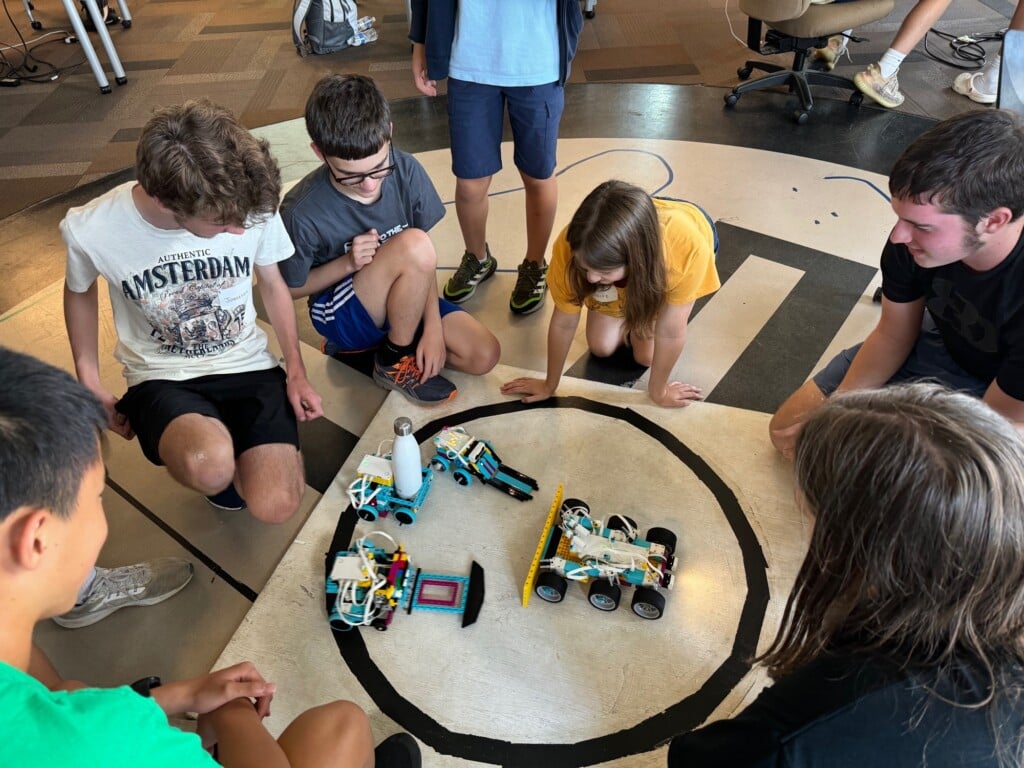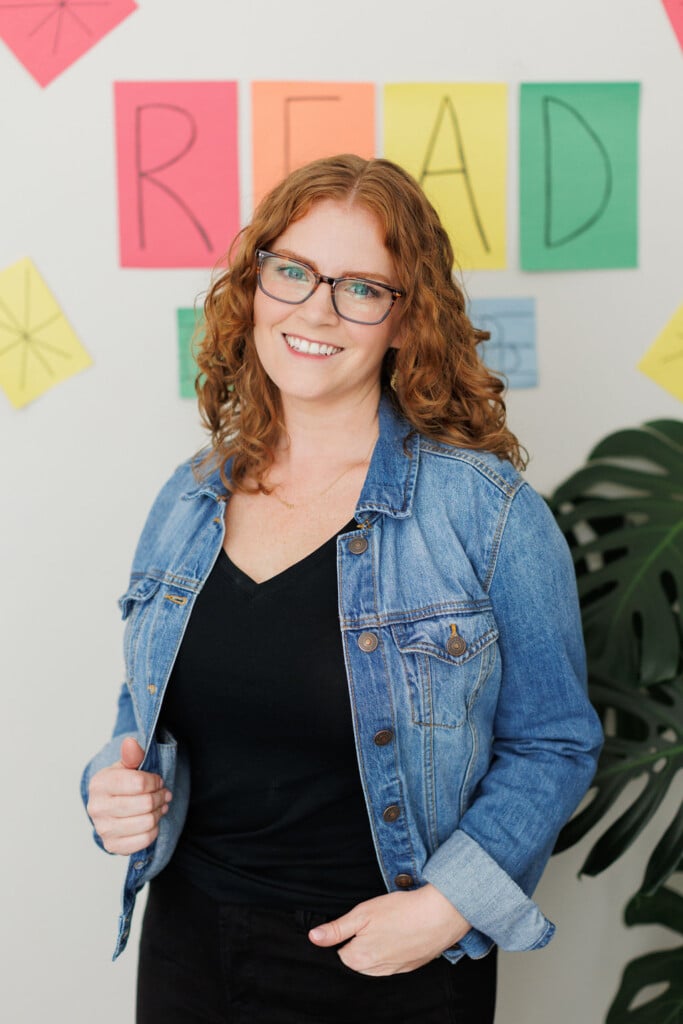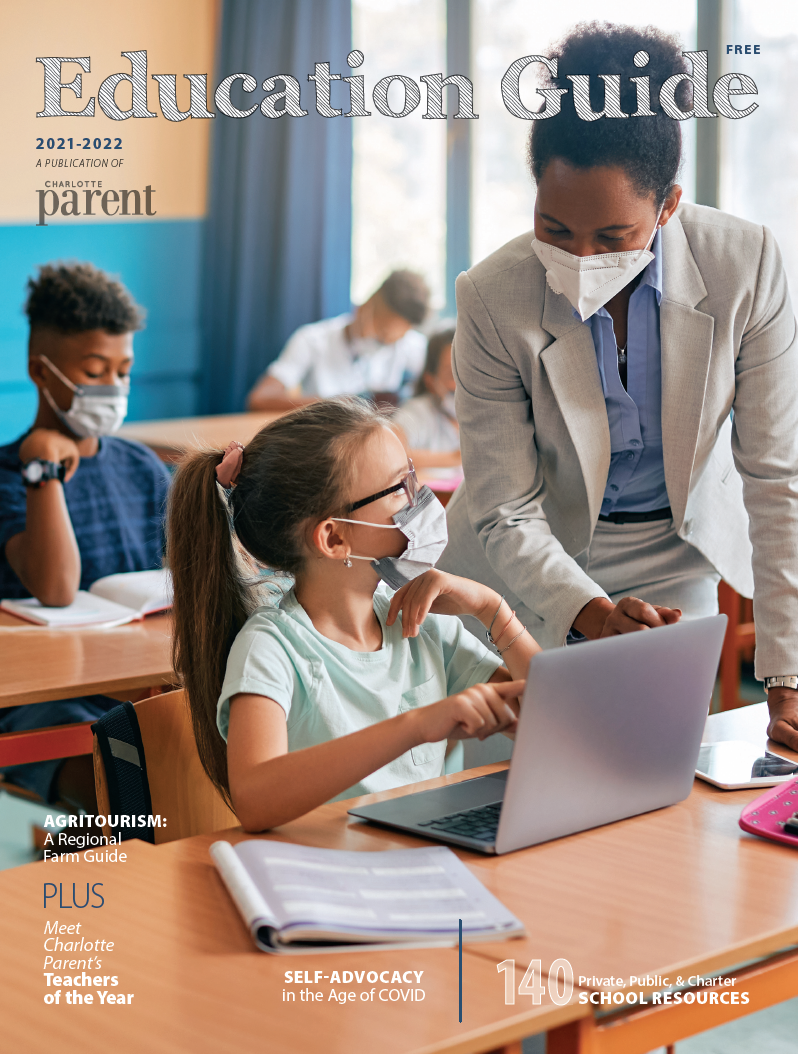SUPPORTING FEMALE ATHLETES: What Parents Need to Know
Q and A with Dr. Jonathan Riboh of OrthoCarolina

Dr. Jonathan Riboh is a team physician for Charlotte FC and the Carolina Panthers, where surgical knee repairs are part of the job description. But in his day job as an orthopedic surgeon for OrthoCarolina, he regularly sees torn anterior cruciate ligaments (ACLs) in young, female athletes.
Riboh performs as many as 120 ACL operations each year on patients under age 18, and more than half are girls. Female athletes, particularly in sports like soccer, basketball, and volleyball, are four to eight times more likely to tear their ACLs than boys.
While surgical outcomes have improved over the years, Dr. Riboh says the return-to-sport rates are “sobering” and get worse with age. “If you’re under 12 or 13, you probably have that 80 to 90% chance of going back to sport,” he says. “The closer you get to high school or college age, that number goes down to about 65% just because the demands of the sports go up. The best way to treat an ACL tear is to never get it in the first place.”
Given that ACL tears are spontaneous, often non-contact injuries, Dr. Riboh says there are proven ways to help prevent them. Charlotte Parent caught up with him to find out why girls are at greater risk and what athletes and their parents can do to lower their risk of this potentially catastrophic injury.
Are you seeing more ACL tears in girls than ever?
The overall incidence of youth ACL tears is increasing, if not exponentially, probably linearly, over the last 15 years. In addition to that, we are seeing it in younger and younger people.
Why is that?
No one knows for sure. One big part is increased participation. Youth sports is a billion-dollar industry. Some of it is increased exposure. If you play soccer once a year, you’re less likely to tear your ACL than if you play soccer 100 times a year.
Are there other risk factors?
There are so many positives to youth sports, but as it pertains to injury, the two things we harp on are 1) early specialization and 2) the professionalization f youth sports. Early specialization is essentially being a single sport athlete at a young age. While the data is not exceptionally powerful, there is good suggestion that early specialization contributes to not just ACL tears, but overuse injuries, burnout, and all sorts of problems in youth sports.
What do you mean by professionalization?
The level of play has gotten exceptionally high. When I was a kid, the thinking was, “We play once or twice a week, and we have fun.” No one was that big and that fast. Now I see 12-year-old girls who are incredibly muscular, incredibly fast, incredibly athletic. It seems like every year for a given age, kids are getting better, faster, stronger and with that comes a challenge, because the higher the velocity, the faster you’re moving, the more likelihood of injury.
Can an ACL tear be an overuse injury?
Not in the way that a stress fracture or tendonitis would be. Almost 100% of the time, an ACL injury is a unique incident. It happens in a millisecond. But an athlete who is only doing the same activities and not getting the strength and neuromuscular benefits of varied sporting activities and cross training and rest periods and off seasons—that athlete is more vulnerable to the sort of freak incident that is the ACL tear. While it’s not an overuse injury, overuse can predispose you to having that.
Are women more susceptible because their hips are wider?
It’s really multifactorial. Some of it is just geometry. Wider hips tend to lead to more of a knock-kneed alignment, what we call valgus alignment. And valgus alignment puts more stress on the ACL, particularly when you land or cut or pivot. Some of it is biochemical, meaning once women become pubertal, hormonal fluctuations lead to changes in the collagenous consistency of your ligaments, even throughout the month. So, at a different time of your menstrual cycle, you will be more vulnerable to ACL injury than at other times.
Another part of it is neuromuscular, which has to do with muscle distribution patterns of women versus men. Women tend to be less strong in their posterior chain muscles (hamstrings and glutes). Unfortunately, those are the muscles that help protect the ACL during activities, by actively holding the tibia in a good position.
What age do you find girls to be the most at risk?
Girls who are 12 to 15 years old make up the core of my clinical population. Their bodies are changing. They’re often transitioning from middle school sports to high school sports. Once they hit high school, if they’re good, they might be playing against juniors and seniors. It’s a high-risk phase, both in terms of tearing your ACL, but also if you have to have surgery having a recurrence of the tear.
What sport is the biggest culprit?
In my practice, for females under the age of 18 who tear their ACLs, it’s probably 70% soccer. After that, lacrosse and basketball are tied at maybe 10% and then a smattering of other things: gymnasts, divers, skateboarders, you name it.
What do you wish more people knew about preventing ACL injuries?
There’s something called FIFA 11+, which you can find easily on Google. It is a program developed by FIFA, the International Federation of football. It’s an 11 exercise, pre-practice warmup specifically designed to reduce the risk of ACL injury. This was developed in the ‘90s, and they have randomized, controlled trials showing that athletes who do this routinely before their soccer practice have 85% reduced risk of tearing their ACL compared to people who don’t. It’s easily available. It’s not time consuming. I see tons of teenage soccer players with ACL tears, and none of them have heard of this thing.
What does the workout entail?
It’s a mix of developing glute strength, hamstring strength, and core strength. It’s positional stability, which is basically yoga, balancing on a single leg, positioning your body in space, and warming up the joints in the musculature.
Any other preventative measures athletes can take?
If you’re playing the high-risk sport, it’s a great idea to see an OrthoCarolina physical therapist. We have extraordinary people who specialize in youth knee injuries. If you’re driving a car, you get it checked out once a year, make sure everything’s working right. If you see a physical therapist once a year and make simple adjustments in landing mechanics or how you warm up, how you stretch, how you strengthen, it can have a profound effect on risk.
CARROLL WALTON was a longtime sportswriter for the Atlanta Journal-Constitution and co-authored Ballplayer, the Chipper Jones biography, in 2017. Today she lives in Charlotte with her husband and three sons and continues to freelance for several media outlets.









